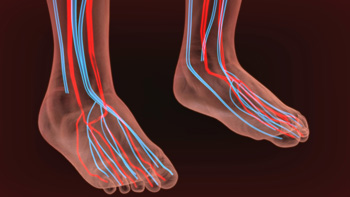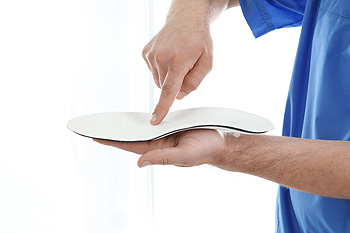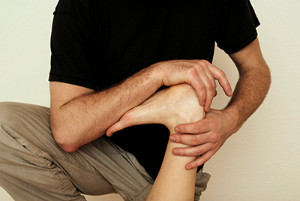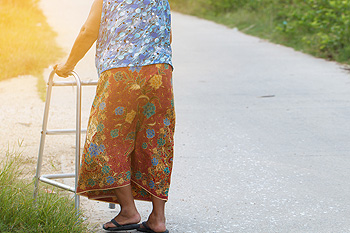Items filtered by date: November 2018
Symptoms of Poor Circulation
 When the blood circulates properly, the correct amount of nutrients and oxygen is supplied in adequate amounts to the organs and other areas of the body. The condition that is known as poor circulation can cause uncomfortable health problems, which may lead to the development of a serious illness. Research has shown there are several warning signs that may be indicative of poor circulation, including experiencing a numbing sensation in the feet, a decrease in the ability to think sharply, or frequently feeling tired. Additionally, there are patients who may feel a tightening of the chest, or notice their feet are cold most of the time. If you are experiencing a tingling sensation or a loss of feeling in your feet, it is suggested to consult with a podiatrist for a proper diagnosis.
When the blood circulates properly, the correct amount of nutrients and oxygen is supplied in adequate amounts to the organs and other areas of the body. The condition that is known as poor circulation can cause uncomfortable health problems, which may lead to the development of a serious illness. Research has shown there are several warning signs that may be indicative of poor circulation, including experiencing a numbing sensation in the feet, a decrease in the ability to think sharply, or frequently feeling tired. Additionally, there are patients who may feel a tightening of the chest, or notice their feet are cold most of the time. If you are experiencing a tingling sensation or a loss of feeling in your feet, it is suggested to consult with a podiatrist for a proper diagnosis.
While poor circulation itself isn’t a condition; it is a symptom of another underlying health condition you may have. If you have any concerns with poor circulation in your feet contact Dr. John P. Beaupied of Palos Podiatry. Our doctor will treat your foot and ankle needs.
Poor Circulation in the Feet
Peripheral artery disease (PAD) can potentially lead to poor circulation in the lower extremities. PAD is a condition that causes the blood vessels and arteries to narrow. In a linked condition called atherosclerosis, the arteries stiffen up due to a buildup of plaque in the arteries and blood vessels. These two conditions can cause a decrease in the amount of blood that flows to your extremities, therefore resulting in pain.
Symptoms
Some of the most common symptoms of poor circulation are:
- Numbness
- Tingling
- Throbbing or stinging pain in limbs
- Pain
- Muscle Cramps
Treatment for poor circulation often depends on the underlying condition that causes it. Methods for treatment may include insulin for diabetes, special exercise programs, surgery for varicose veins, or compression socks for swollen legs.
As always, see a podiatrist as he or she will assist in finding a regimen that suits you. A podiatrist can also prescribe you any needed medication.
If you have any questions, please feel free to contact our office located in Palos Heights, IL . We offer the newest diagnostic and treatment technologies for all your foot care needs.
Orthotics May Help Specific Types of Foot Pain
 Foot pain may occur for several different reasons. Helpful aids may include wearing orthotics, which may alleviate a portion of the pain and discomfort. They are described as an insert that is placed inside the shoes and may provide the additional support and stability that is needed. There are specific kinds of orthotics that are used, and the correct type that is needed is generally determined by the type of foot pain that is experienced. Some of the conditions that are treated with these devices may include plantar fasciitis, bunions, or rheumatoid arthritis. If you have foot pain and would like additional information about the benefits of orthotics, it is suggested to consult with a podiatrist who is able to provide the answers you are seeking.
Foot pain may occur for several different reasons. Helpful aids may include wearing orthotics, which may alleviate a portion of the pain and discomfort. They are described as an insert that is placed inside the shoes and may provide the additional support and stability that is needed. There are specific kinds of orthotics that are used, and the correct type that is needed is generally determined by the type of foot pain that is experienced. Some of the conditions that are treated with these devices may include plantar fasciitis, bunions, or rheumatoid arthritis. If you have foot pain and would like additional information about the benefits of orthotics, it is suggested to consult with a podiatrist who is able to provide the answers you are seeking.
If you are having discomfort in your feet and would like to try orthotics, contact Dr. John P. Beaupied from Palos Podiatry. Our doctor can provide the care you need to keep you pain-free and on your feet.
What Are Orthotics?
Orthotics are inserts you can place into your shoes to help with a variety of foot problems such as flat feet or foot pain. Orthotics provide relief and comfort for minor foot and heel pain but can’t correct serious biomechanical problems in your feet.
Over-the-Counter Inserts
Orthotics come in a wide variety of over-the-counter inserts that are used to treat foot pain, heel pain, and minor problems. For example, arch supports can be inserted into your shoes to help correct overarched or flat feet, while gel insoles are often used because they provide comfort and relief from foot and heel pain by alleviating pressure.
Prescription Orthotics
If over-the-counter inserts don’t work for you or if you have a more severe foot concern, it is possible to have your podiatrist prescribe custom orthotics. These high-quality inserts are designed to treat problems such as abnormal motion, plantar fasciitis, and severe forms of heel pain. They can even be used to help patients suffering from diabetes by treating foot ulcers and painful calluses and are usually molded to your feet individually, which allows them to provide full support and comfort.
If you are experiencing minor to severe foot or heel pain, it’s recommended to speak with your podiatrist about the possibilities of using orthotics. A podiatrist can determine which type of orthotic is right for you and allow you to take the first steps towards being pain-free.
If you have any questions please contact our office located in Palos Heights, IL . We offer the newest diagnostic and treatment technologies for all your foot and ankle needs.
Wounds That Don't Heal Need to Be Checked
The Benefits of Stretching the Feet and Toes
 Research has shown the importance of stretching the toes and feet as frequently as possible. The many benefits of performing stretching techniques for the feet may include an improved range of motion, which may aid in keeping the feet and ankles strong, added flexibility that may contribute to providing additional support, in addition to possibly reducing any mild foot pain that may exist. There are a few simple and effective toe and foot stretches that can be performed. These may include raising your heels up and down while sitting in a chair, followed by pointing and flexing the toes. Additionally, stretches that are geared toward strengthening the top of the feet may include spreading the toes as far apart as possible while sitting down, holding for five seconds, followed by repeating this process up to ten times. If you would like to learn more about additional stretching movements that can benefit the feet and toes, it’s suggested to speak with a podiatrist for proper techniques.
Research has shown the importance of stretching the toes and feet as frequently as possible. The many benefits of performing stretching techniques for the feet may include an improved range of motion, which may aid in keeping the feet and ankles strong, added flexibility that may contribute to providing additional support, in addition to possibly reducing any mild foot pain that may exist. There are a few simple and effective toe and foot stretches that can be performed. These may include raising your heels up and down while sitting in a chair, followed by pointing and flexing the toes. Additionally, stretches that are geared toward strengthening the top of the feet may include spreading the toes as far apart as possible while sitting down, holding for five seconds, followed by repeating this process up to ten times. If you would like to learn more about additional stretching movements that can benefit the feet and toes, it’s suggested to speak with a podiatrist for proper techniques.
Stretching the feet is a great way to prevent injuries. If you have any concerns with your feet consult with Dr. John P. Beaupied from Palos Podiatry. Our doctor will assess your condition and provide you with quality foot and ankle treatment.
Stretching the Feet
Being the backbone of the body, the feet carry your entire weight and can easily become overexerted, causing cramps and pain. As with any body part, stretching your feet can serve many benefits. From increasing flexibility to even providing some pain relief, be sure to give your feet a stretch from time to time. This is especially important for athletes or anyone performing aerobic exercises, but anyone experiencing foot pain or is on their feet constantly should also engage in this practice.
Great ways to stretch your feet:
- Crossing one leg over the others and carefully pull your toes back. Do 10-20 repetitions and repeat the process for each foot
- Face a wall with your arms out and hands flat against the wall. Step back with one foot and keep it flat on the floor while moving the other leg forward. Lean towards the wall until you feel a stretch. Hold for 30 seconds and perform 10 repetitions for each foot
- Be sure not to overextend or push your limbs too hard or you could risk pulling or straining your muscle
Individuals who tend to their feet by regular stretching every day should be able to minimize foot pain and prevent new problems from arising.
If you have any questions, please feel free to contact our office located in Palos Heights, IL . We offer the newest diagnostic and treatment technologies for all your foot care needs.
Performing Regular Exercise May Aid in the Prevention of Falling
 Research has shown that people who are sixty five or older may have an increased risk in falling. As a result, many people have incurred serious injuries. There have been recent studies which cite that when patients partake in a regular exercise program, the chances of falling may decrease. Specific exercises may be introduced to include resistance and strength training, which may increase overall body strength, yoga, which may aid in improving flexibility, and tai chi, which may help to maintain proper balance. Additionally, there have been studies performed that include taking vitamin D supplements for the prevention of falling. However, after much consideration, it has been found that taking this particular supplement has little or no correlation with reducing the risk of falling unless there are medical conditions involved that may include osteoporosis or a vitamin D deficiency.
Research has shown that people who are sixty five or older may have an increased risk in falling. As a result, many people have incurred serious injuries. There have been recent studies which cite that when patients partake in a regular exercise program, the chances of falling may decrease. Specific exercises may be introduced to include resistance and strength training, which may increase overall body strength, yoga, which may aid in improving flexibility, and tai chi, which may help to maintain proper balance. Additionally, there have been studies performed that include taking vitamin D supplements for the prevention of falling. However, after much consideration, it has been found that taking this particular supplement has little or no correlation with reducing the risk of falling unless there are medical conditions involved that may include osteoporosis or a vitamin D deficiency.
Preventing falls among the elderly is very important. If you are older and have fallen or fear that you are prone to falling, consult with Dr. John P. Beaupied from Palos Podiatry. Our doctor will assess your condition and provide you with quality advice and care.
Every 11 seconds, an elderly American is being treated in an emergency room for a fall related injury. Falls are the leading cause of head and hip injuries for those 65 and older. Due to decreases in strength, balance, senses, and lack of awareness, elderly persons are very susceptible to falling. Thankfully, there are a number of things older persons can do to prevent falls.
How to Prevent Falls
Some effective methods that older persons can do to prevent falls include:
- Enrolling in strength and balance exercise program to increase balance and strength
- Periodically having your sight and hearing checked
- Discuss any medications you have with a doctor to see if it increases the risk of falling
- Clearing the house of falling hazards and installing devices like grab bars and railings
- Utilizing a walker or cane
- Wearing shoes that provide good support and cushioning
- Talking to family members about falling and increasing awareness
Falling can be a traumatic and embarrassing experience for elderly persons; this can make them less willing to leave the house, and less willing to talk to someone about their fears of falling. Doing such things, however, will increase the likelihood of tripping or losing one’s balance. Knowing the causes of falling and how to prevent them is the best way to mitigate the risk of serious injury.
If you have any questions, please feel free to contact our office located in Palos Heights, IL . We offer the newest diagnostic and treatment technologies for all your foot care needs.





